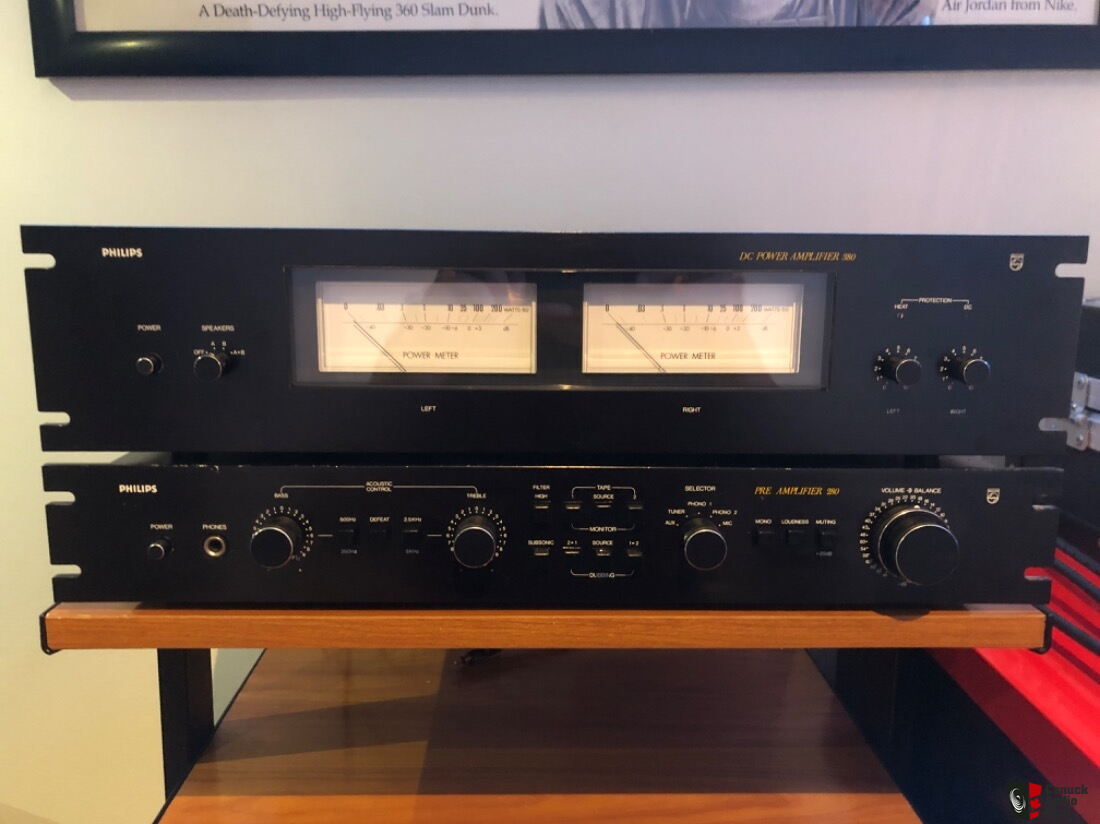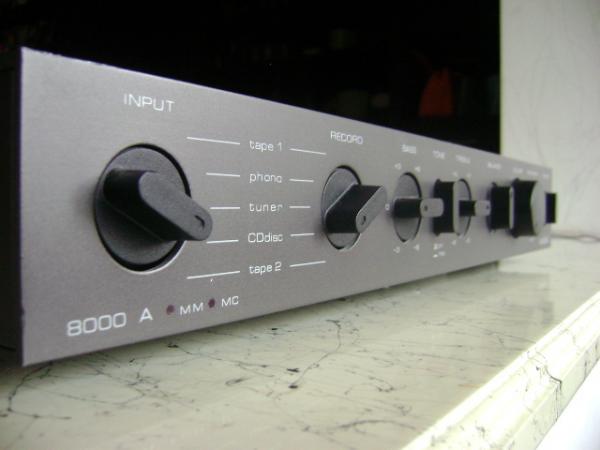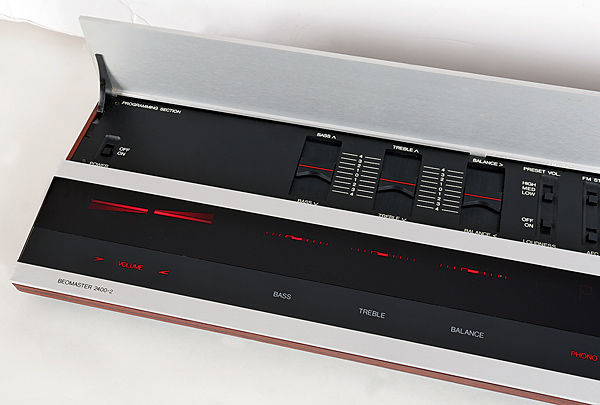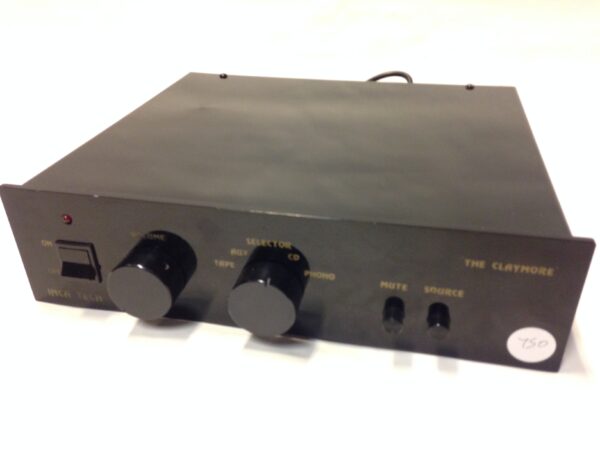When the 3155 was introduced in January 1985, NAD touted it as “two products in one.” “As a preamplifier, it rivals the sound characteristics of most discrete audiophile preamps while outperforming them in terms of operating versatility.” It pushes even problematic loudspeakers to shockingly high volume levels with clean, substantial, full-bodied musical sound that is delightfully free of distortion even at transient peaks as a high-current high-headroom power amplifier.”
The business had been making hi-fi separates for nearly thirteen years by the time this integrated amplifier was released, and it had been quite a voyage. Its early models were unremarkable, with a conventional appearance and a passable but not very distinctive sound. The 3020, which was introduced in 1979, was a turning point in the company’s history. Despite being drastically discounted to reflect its low £60 retail price (which strangely climbed by £20 after a flurry of positive reviews), it delivered stellar performance. Indeed, at double the price, you’d have had a hard time finding anything finer.
When the 3155 debuted six years later, it marked both a price increase (it cost £290 new versus £139 for the 1984 3020B) and the introduction of a new design language for NAD. It offered a broader 420x108x380mm housing, as well as new compact switchgear and graphics, along with the 3130, which replaced the 3020B. I would say that its aesthetic was an unqualified success thirty-five years later; this current generation of NADs may not be attractive, but the look is crisp, utilitarian, and has aged less than other of the more ‘far out’ eighties designs.
The main critique is that it was – and still is – anonymous; the 3155 appears less illustrious than it should, and the quality of the design on the inside contradicts the 3155’s appearance. When you take the casing off the 3130, which is extremely similar in appearance and size, you’ll notice a lot of free space – but not so with this amplifier. It boasts a heftier frame-type power transformer than the 3130, big heatsinking bars along the length of the case, and even a plug-in MM/MC phono stage card.
Despite delivering a slew of features and more power than its Huntingdon-based opponent, the 3155 was never like as popular in the sales department as the Mission Cyrus 2. The 3155 was also significantly better built than the 3130, which, like most NADs from 1978 to 1985, was made in Taiwan; the 3130, like most NADs from 1978 to 1985, was made in Taiwan. The 3155’s construction and component quality were visibly superior, and the fascia, which on the 3130 is a dark grey plastic molding, is really painted aluminium in the 3155. It’s a lot heavier than its cheaper 3130 sister at 9.8kg, yet it looks surprisingly identical.
The 3155’s power amplifier unit, as well as its 2155 stereo power spin-off, were said to be rated at 55W RMS per channel in conservative mode, up to 150W RMS in bridged mono mode. Both, according to NAD, had a full 3dB of IHF dynamic headroom (2.5 dB in bridged mode), meaning they could deliver twice their rated power in quick bursts into a continuous stream (110W per channel in stereo and about 250W bridged). Owners of the 3155 could add a 2155 and run them in bridged mode for 150W RMS per side and 250W peak power. The company also claims to be able to produce up to 40A of current.
Even the preamp component of the 3020 was outstanding for its price, with the phono stage being a real highlight. By the time the 3155 was released, NAD had a strong reputation for preamplifiers; even the preamp section of the 3020 was superb for its price, with the phono stage being a true highlight. The 3155 received a more sophisticated, updated version of this that was optimized for CD players’ 2V line level outputs. With ten specifically selected transistors per channel, a differential FET input circuit, and a custom-wound input filter, the phono section was enhanced. A second high gain moving coil stage with switchable impedance utilized ultra-low noise transistors. As a result, the claimed 107dB dynamic range “comfortably accommodates all digitally-mastered LP recordings with room to spare,” according to NAD.
Bass EQ, which delivers a 6dB boost at 32Hz “to reinforce and extend the deep bass response of closed-box loudspeaker systems,” was one of the more unusual elements of the preamp section. This was and is of dubious value, as is the Infra Defeat switch, which disables the built-in infrasonic filter, which was designed to remove record warps. The 3020B series’ loudspeaker impedance matching has been carried over, allowing the amp to produce more output voltage into higher (8 ohm) loads. When the output signal waveform swings into clipping, NAD’s Soft Clipping circuit comes into play, and it’s as useful as ever. If you overdrive the amp, this saves your loudspeakers’ life, but like with many NADs from this era, it’s best turned off while listening at more typical, non-party volumes. This is due to the fact that when it is turned on, it significantly softens the sound.
The 3155 is significantly less common than the popular 3130 or the massively profitable 3020 family of amplifiers. It was on the air from January 1985 until January 1987, after which it was replaced and shortly forgotten. Nonetheless, it’s an intriguing amplifier for the current value it provides; in terms of general quality, it’s effectively the equal of something now selling for £1,500. It has a good build quality, a long lifespan, and several useful features, such as a split preamp/power amp and a superb MM/MC phono stage, however it regularly sells secondhand for under £300. If you add a 2155 power amp, you’ll be hard pressed to find anything under £2,000 that comes close to matching it.
The 3155 isn’t without flaws acoustically, but it does a lot of things extremely well. The most evident feature is its signature ‘NAD sound,’ which is huge, wide, musically engaging, and slightly warm in tone. It’s not an amplifier that makes music sound thin, sharp, or analytical; instead, it gives you a big-hearted, emotive rendering of whatever you feed it. The bass has a powerful thump, and the center image is strong, with vocals lingering ethereally in space, however the depth perspective isn’t great. From left to right, everything in the mix is nicely divided and given enough of freedom to breathe. It’s pretty seductive rhythmically; the music flows smoothly, and you get the impression that the instrumentalists are having a good time performing together. It has a romantic tone to it, almost valve-like – but it is far from as euphonic as the early versions of the 3020, which sounded more valve-like than some valve amps!
The negative is that the 3155’s midband is rather opaque in absolute terms; there’s a faint haze and a lack of genuine incision that goes unnoticed through inexpensive speakers but is rapidly picked up by high-end setups. Also, while the bass has enough of punch, it lacks genuine articulation and grip, and the treble isn’t nearly as spacious and airy as it could be, despite being pleasingly pleasant. Although the soundstage is very large, the position of instruments within the stereo mix is a little hazy. Finally, the treble can sound a little generic when compared to more high-end designs; it has a wonderful smooth feel but doesn’t really dig into the grit of hi-hat cymbal sounds, for example. But none of this is meant as a criticism; its Mission Cyrus 2 counterpart performed no better in many of these areas and did worse in others.
Overall, this is a capable and likeable integrated amplifier – one that has a strong flavor of that old NAD sound from 1979 to 1984, but with greater power, better features, and a better build. The amazing thing about getting one secondhand is that, because it was undervalued and missed when new, used costs aren’t all that dissimilar to the now-trendy 3020s and 3130s, despite the fact that it is clearly superior to both. Find a nice one, have it serviced (the switch contacts are a renowned NAD bugbear here), and enjoy it – while counting how much money you saved by not purchasing a more stylish classic!







